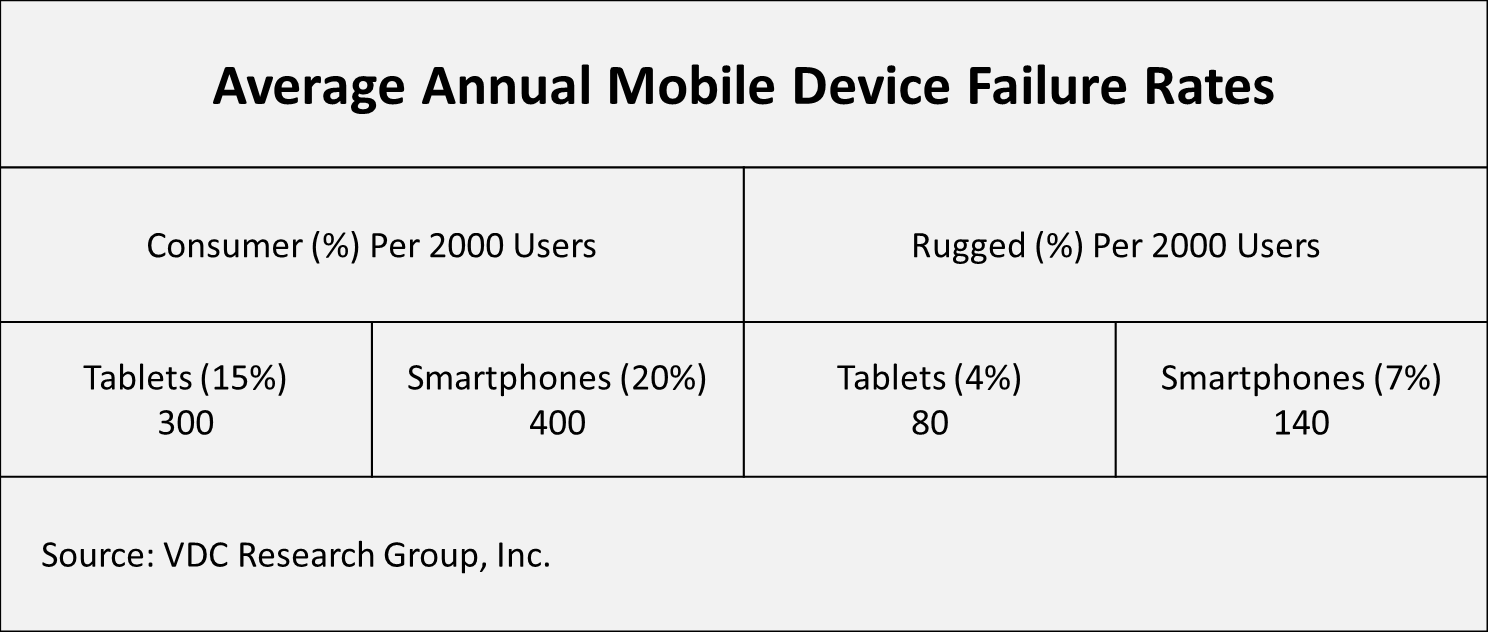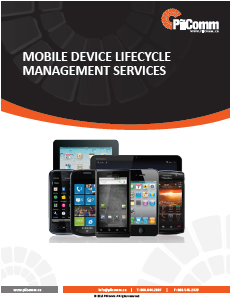
Device Failure Rates As High As 50%
A strategy to deploy device spares to minimize user downtime is a must for organizations with large mobile users. This especially those that have made a strong commitment to enterprise mobility.
A lack of device spares can negatively impact the productivity of mobile users, IT Help Desk staff and customers.
If the mobility infrastructure is in place to directly support customers such as would be the case for a courier firm, then a simple incident such as dropping a device in a puddle, can potentially cost thousands of dollars in lost revenue and more importantly, create a negative customer experience.
Failure Rates
VDC Research, in a study entitled, “Mobile Device TCO Models for line of Business Solutions”, published informative, if not surprising data about device failure rates. The folks at VDC divided their findings into two categories: consumer and rugged devices.
Effective Device Spares Management Strategies
There are three approaches that have proven to be most effective at mitigating the negative impacts of downtime. The choice that works best for your organization is a function of several factors. These include but are not limited to: geography, time-zone, user demographics, industry type, network connectivity and also availability of trained resources. All three approaches described below require careful scrutiny because they relate to your particular situation.
Centralized
In this model all device spares are maintained at a central location. This arrangement can be most effective where user populations are within easy reach of delivery firms and where the cost of downtime is well-understood. The mobile use cases are not of a mission-critical nature. This also tends to be cost-effective and most efficient relative to using Help Desk resources.
Distributed
Organizations that support widely distributed work groups and/or for mobility-based applications that are mission-critical, distributed volumes of pools of spare devices tend to be the best approach to minimizing downtime. For example, courier drivers, need to be able to access, fully-operational devices typically within an hour or less. It is imperative that local spares inventories are then actively managed so as to ensure availability levels remain constant.
Hybrid
Generally-speaking, for large, geographically dispersed organizations, the logistics behind maintaining mobile workforce user productivity usually involves managing device populations distributed nationally and possibly globally. Not only are time-zone and border issues relevant but so are idiosyncrasies around carrier networks, SIM card management, languages etc.
Learn more about managed mobility services: click here


